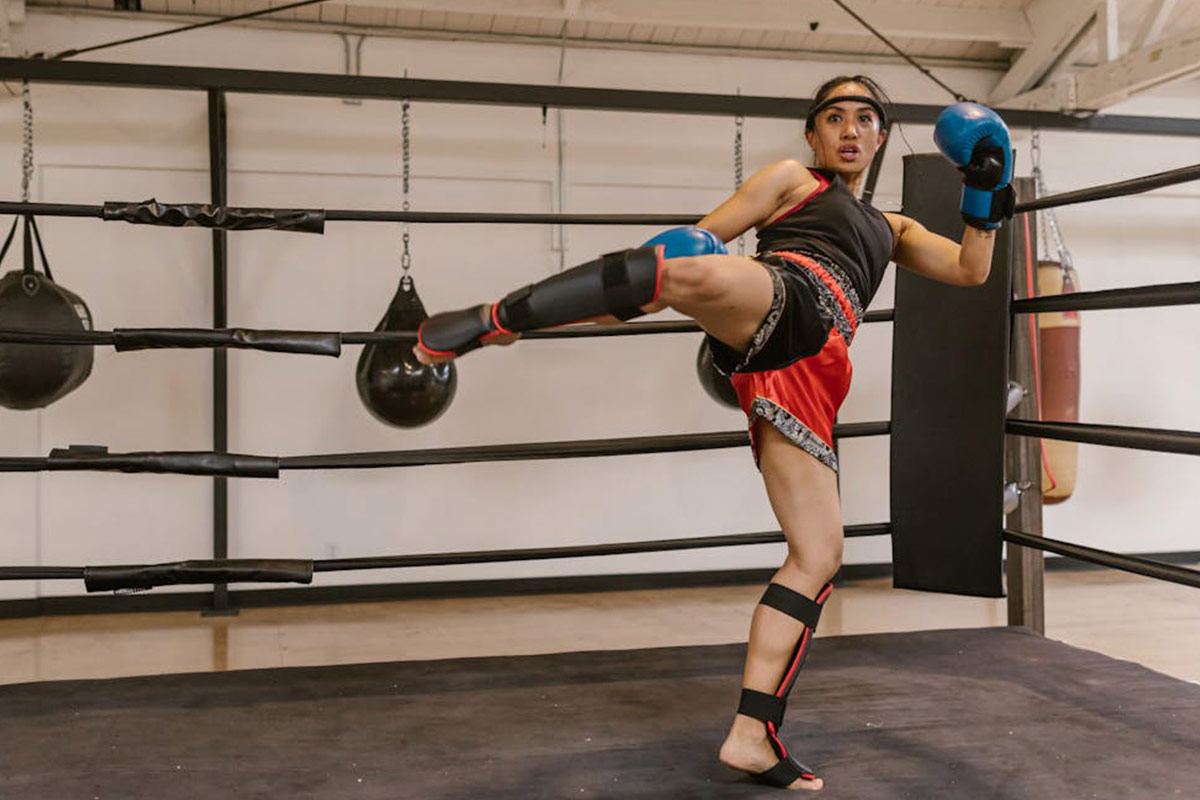
Photo Credit: RDNE Stock project
When the demands of academia—tests, papers, and group projects—start to pile up, students often find themselves neglecting physical health in the face of mental challenges. However, incorporating a fitness routine can actually enhance your academic performance by boosting your energy levels and improving your focus. For students looking to spice up their workouts and embrace a challenging yet rewarding physical regimen, turning to the practices of female martial artists might be the perfect solution.
For those who might balk at the notion of adding one more thing to their crowded schedules, consider this. Incorporating elements from the workouts of elite athletes into your routine doesn’t have to be time-consuming. In fact, it can be a perfect way to decompress from a long session of group study or search for a perfect college paper writing service. Martial arts training emphasizes discipline and mental fortitude—qualities that can also enhance your academic life.
Incorporating Martial Arts into Your Routine
Why Choose Martial Arts?
Martial arts offer a unique blend of physical conditioning, mental clarity, and emotional resilience. For students who juggle lectures, labs, and college life, these workouts provide a holistic approach to wellness. The training regimens of female martial artists, in particular, combine strength, flexibility, and endurance training in a way that is adaptable to various fitness levels and time constraints. Embracing these regimens can dramatically improve your physical health and also enhance mental sharpness, making it easier to handle the rigors of academic life.
Key Exercises to Start
Strength Training: Many martial artists, like Ronda Rousey, incorporate Olympic lifting and bodyweight exercises into their routines. Students can start with basic movements like squats, push-ups, and planks, which do not require a gym or special equipment. These exercises build core strength and stability, which are crucial for any physically demanding activity and also beneficial for maintaining posture during long study sessions.
Flexibility and Mobility Work: Taekwondo artist and Olympic medalist Jade Jones emphasizes the importance of flexibility in her training. Simple stretching routines and yoga can be done in a dorm room or small space, perfect for unwinding after hours spent on assignments or homework. Regular flexibility training can help prevent injuries, reduce stress levels, and increase overall body awareness.
Cardiovascular Fitness: Kickboxing drills can increase your heart rate and improve endurance. These can be performed in short intervals, which are ideal for breaks between studying sessions. Such high-energy workouts not only improve cardiovascular health but also boost endorphin levels, which can elevate your mood and energy levels, making it easier to return to your studies refreshed.
Customizing Your Training to Fit Academic Life
Adapting Workouts for Busy Schedules
Understanding that students are pressed for time, especially during exams or when assignments are due, martial arts training can be adjusted to fit into short periods. Implementing high-intensity interval training (HIIT) versions of martial arts exercises can give you a full-body workout in just 20-30 minutes. This time-efficient training can fit seamlessly into a busy college schedule, ensuring students can remain active even during their busiest weeks.
Mental Benefits for Students
Beyond the physical benefits, martial arts training incorporates a significant amount of mental and strategic thinking. This aspect of training can help improve concentration and stress management—crucial skills for any student engaged in learning and academic pursuits. The focus and discipline required in martial arts can translate directly into the ability to manage academic pressures and excel in complex problem-solving tasks.
Staying Motivated and Consistent
Setting Achievable Goals
For students, setting short-term, achievable goals makes it easier to stick to a fitness regimen. Whether it’s improving flexibility, building strength, or simply dedicating 15 minutes a day to physical activity, having clear objectives can keep you motivated. Achieving these goals can provide a significant psychological boost, enhance your self-confidence, and improve your overall productivity in both academic and personal life.
Community and Support
Joining a club or group fitness class at school can provide a sense of community and accountability, which are essential for maintaining a long-term fitness routine. Surrounding yourself with peers who have similar goals can enhance your school experience and keep you committed to your fitness goals. This support system is vital for staying motivated and can make the journey towards fitness more enjoyable and sustainable.
Conclusion
Embracing the discipline and challenges of martial arts can transform your fitness routine and positively impact your academic performance. These workouts not only build physical strength but also teach resilience and focus, qualities every student can benefit from. Remember, just like using a paper writing service such as Essay Hub for your assignments, incorporating elements from fitness regimens of accomplished martial artists into your routine for physical fitness can provide a balanced approach to both your academic and physical health.
Author Bio
Content Writer Nicole Hardy, a distinguished journalist in the realms of education and the arts, is celebrated for her thorough and discerning coverage of performing arts education. Her career, which extends beyond ten years, has solidified her status as an authoritative figure in this domain. Hardy is praised for her thorough analyses and captivating writing manner. She earned her Master’s in Journalism from the University of Arts, with a focus on arts and culture journalism.



